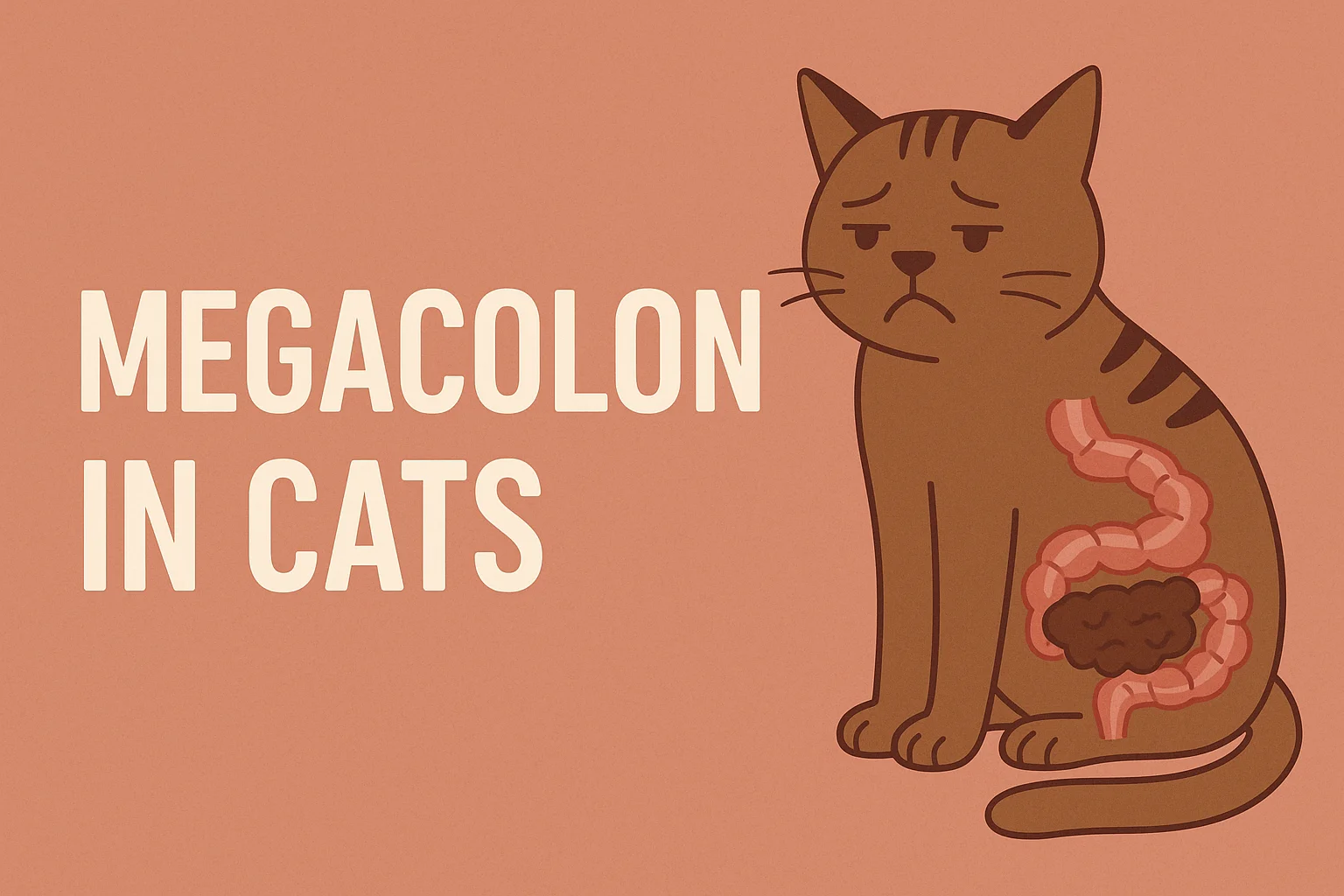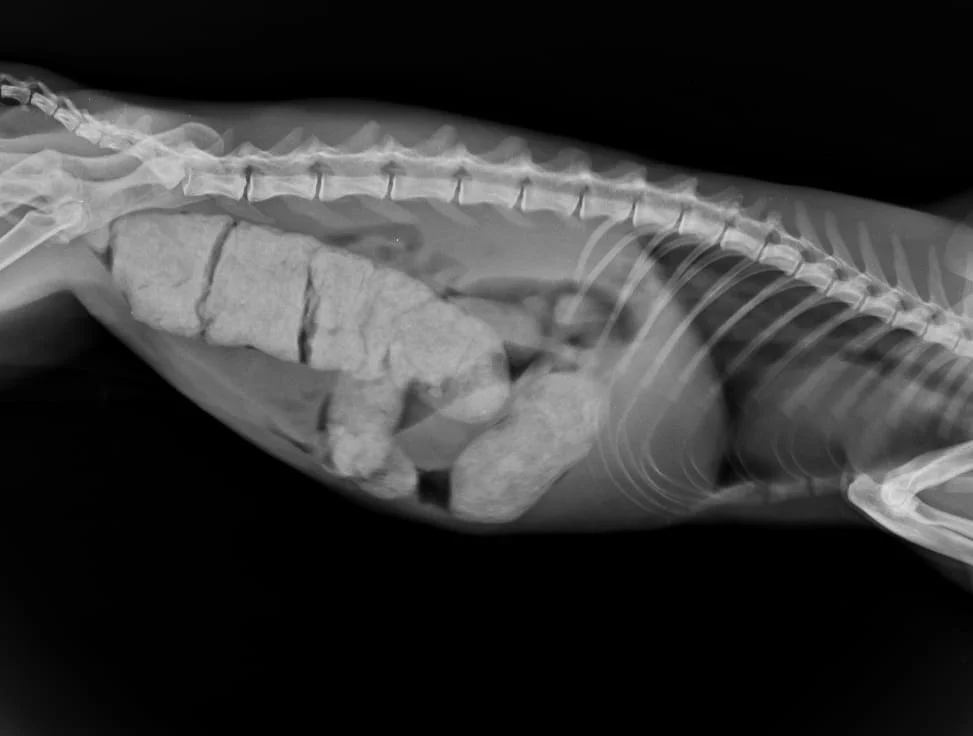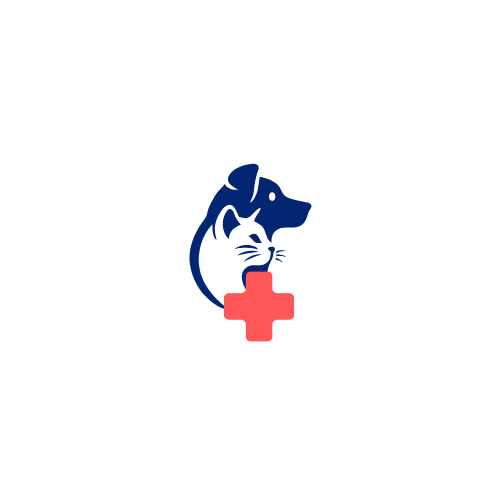
Megacolon in Felines (Idiopathic)
Megacolon in cats is a condition where the colon becomes enlarged and loses its ability to contract, leading to severe constipation and fecal buildup.
Introduction
Cats are graceful, independent, and full of charm — but when something’s wrong, they’re not always quick to show it. One condition that can silently creep up on our feline friends is megacolon. It’s a serious, often chronic issue that affects the large intestine and can cause major discomfort. If your cat is straining in the litter box or going days without a bowel movement, it might be more than just constipation. Let’s break down what megacolon is, why it happens, and how you can help your kitty feel better.
What Exactly Is Megacolon?
Megacolon happens when the colon (the last part of the digestive tract) stretches out and loses its ability to push stool out properly. This leads to a painful buildup of feces and, in many cases, complete blockage — also known as obstipation.
If left untreated, it can cause serious health issues like dehydration, appetite loss, or even a ruptured colon. But with early intervention and the right care, cats with megacolon can still enjoy a happy life.
What Causes It?
There are two main types of megacolon in cats:
-
Primary (idiopathic) megacolon: This is the most common type, especially in older cats, and frustratingly, we don’t always know the exact cause. It may be linked to nerve or muscle problems in the colon.
-
Secondary megacolon: This type results from another underlying issue, such as:
-
Long-term constipation
-
Pelvic injury or narrowing after trauma
-
Spinal cord problems
-
Tumors or physical blockages
-
Nerve damage
Signs to Watch For
Your cat can’t tell you what’s wrong, but their behavior might. Look out for:
-
Straining in the litter box
-
Infrequent or no bowel movements
-
Hard, dry, or large stools
-
Bloated belly or signs of pain
-
Lethargy or hiding more than usual
-
Vomiting or appetite loss
-
Weight loss over time
If any of these symptoms last more than a couple of days, it’s time to call your vet.
How Is It Diagnosed?
Your veterinarian will do a physical exam — often, they can feel the enlarged colon. But to get a clearer picture, they’ll likely recommend:
-
X-rays to see the stool buildup and colon size
-
Blood tests or ultrasound to rule out other conditions
-
Neurological checks if there’s a possibility of spinal issues
Treatment Options
Treatment depends on how serious the condition is and whether it’s a one-time problem or ongoing.
1. Medical Management
For many cats, treatment starts with:
-
Laxatives or stool softeners ( Laxatives should be avoided in dehydrated animals because they can make dehydration worse.)
-
Enemas ( enemas include warm tap water (5–10 mL/kg), warm saline (0.9% NaCl) solution (5–10 mL/kg) with or without a mild soap to act as an irritant, DSS (5–10 mL/cat), mineral oil (5–10 mL/cat), or lactulose (5–10 mL/cat). Phosphate-containing enemas must be avoided in cats due to the potential for developing severe electrolyte imbalances and potentially life-threatening hyperphosphatemia and subsequently, hypocalcemia, hypernatremia, and hyperosmolality.)
-
Prokinetic medications to help the colon move more effectively. (e.g., cisapride 0.1–0.5 mg/kg, PO, every 8–12 hours effectively stimulates colonic propulsive motility in cats with mild to moderate idiopathic constipation.)
-
Diet changes — your vet may recommend:
-
High-fiber diets for mild constipation
-
Low-residue diets for chronic or severe cases
2. Manual Removal
If the colon is completely blocked, your vet may need to manually remove the impacted stool under anesthesia. It sounds intense, but it’s often necessary and provides immediate relief.
3. Surgery (Subtotal Colectomy)
If medications and diets don’t work, the best option may be surgery. In a subtotal colectomy, most of the colon is removed. While this might change your cat’s stool consistency, many cats do extremely well afterward and enjoy a much better quality of life.
Living With Megacolon
The good news? With the right care, cats with megacolon can live full and content lives. It may mean adjusting their diet, giving meds regularly, and visiting the vet more often, but it’s worth it to see them comfortable and active again.
CASE STUDY:
Patient: “Furball,” a 1-year-old male neutered domestic longhair.
History & Clinical Signs: Presented with a 10-day history of constipation, straining, lethargy, vomiting, and abdominal distension.
Diagnostics: Physical exam revealed a distended colon with palpable fecal masses. Abdominal radiographs confirmed severe colonic dilation. Bloodwork was unremarkable; no orthopedic or neurologic abnormalities were noted.
Diagnosis: Idiopathic megacolon
Treatment: Initial medical management included enemas solutions administered slowly through a 10–12 French rubber catheter passed per rectum under sedation, manual deobstipation, IV fluids, lactulose, and a high fiber and a low-residue diet.
Outcome: Over a 3-month period, Furball responded well to consistent medical management. Bowel movements became regular, appetite normalized, and no further obstipation episodes occurred. The owner was educated on long-term dietary compliance and medication adherence. While surgical treatment remains the gold standard for refractory megacolon, this case demonstrates that strict medical management can yield a favorable outcome in early-stage idiopathic megacolon when surgery is not done.

